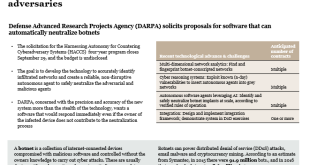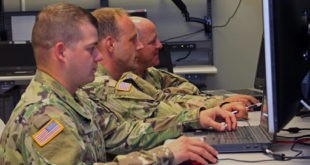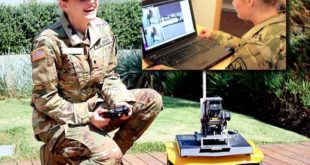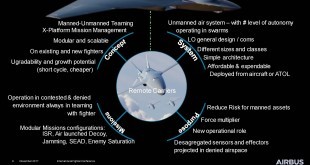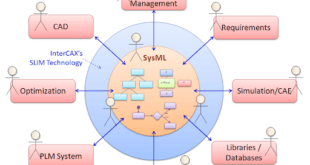The emerging battlefield is a multi-domain battlefield which shall include all the traditional domains of land, air and sea as well as Cyber, Space, Low Intensity conflicts, Information warfare including Psychological warfare and cognitive warfare shall be exploited by our adversaries simultaneously or in any desired combinations. DARPA has …
Read More »Project Maven accelerated weaponizing Artificial Intelligence for the US military, was it used to kill Iran’s nuclear scientist
DoD collects loads of data from satellites, drones and Internet-of-things devices. But it needs help making sense of the intelligence and analyzing it quickly enough so it can be used in combat operations. But, the sheer volume of video content produced makes identifying, assembling and delivering actionable intelligence — from …
Read More »US Navy thrust on preventative maintenance & prognostics-based approach to increase operational availability or mission success of Naval fleet or battlegroup
One of the major objectives of the military is to achieve high reliability and operational availability of their assets. Significant operational benefits are to be gained by employing highly reliable military assets. The major reasons why achieving high reliability is so important are: (1) maintaining weapons systems consumes a significant …
Read More »DARPA A-Teams, CAML & ADAPT programs developing efficient Agile Human-Machine Teams to execute battlefield, cyber and electronic warfare missions
The prime aim of US third offset strategy, announced in November 2014, was to develop effective strateges against multiple potential competitors, from small regional states like North Korea and Iran, to large advanced states like Russia and China, to non-state adversaries and actors with advanced capabilities. In response to third …
Read More »DARPA CHARIOT developing Quantum proof cryptography for Military Mobile and IoT security
The exponential price/performance improvements in semiconductor technology stemming from Moore’s Law are enabling even the smallest and most application-specific devices, such as sensors and actuators, to include networking capabilities. The overwhelming majority of such devices will be cheap and power-constrained. Low device costs permit deployment in unprecedented numbers, with some …
Read More »DARPA HACCS employing AI for cybersecurity by developing autonomous software agents, that will infiltrate adversary’s networks, detect botnets and neutralize them
As the complexity of software is growing software vulnerabilites are also increasing. According to two US based organizations that track vulnerability disclosure, the number of software vulnerabilities has gradually grown year-over-year achieving its highest peak in 2017. Computers are not patched reliably, configured properly, or used safely, allowing widespread exploitation. …
Read More »DARPA V-SPELLS to develop automated tools for understanding, Re-engineering and Assurance of legacy software of Defense and Aerospace systems
The complexity of aerospace and defense software has grown manyfold. For example, the U.S. Air Force F-22 Raptor jet fighter, consists of about 1.7 million lines of software code, while the F-35 joint strike fighter has about 5.7 million lines of code to operate its onboard systems. Boeing’s new 787 …
Read More »US Army’s JUDI is employing Conversational AI to imrpove soldier-robot interaction for Manned-unmanned teaming (MUM-T)
Since fully autonomous UAS are still far off, the US Army has developed concept of Manned-unmanned teaming (MUM-T) for operation in A2/AD environments. Through MUM-T operations they expect to combine the strengths of manned and unmanned platform to increase situational awareness, allowing the armed forces to conduct operations that include …
Read More »US Army developing Manned-Unmanned Teaming ( MUM-T ) technologies in multiple domains for operation in A2/AD environments
US military is facing increasingly Anti-access /Area denial environment, a set of overlapping military capabilities and operations designed to slow the deployment of U.S. forces to a region, reduce the tempo of those forces once there, and deny the freedom of action necessary to achieve military objectives . Unmanned Air …
Read More »DOD Digital Engineering Strategy based on Model-Based Systems Engineering (MBSE) for Military System of Systems (SOS)
A system is defined by NASA as a construct or collection of different elements that together produce results not obtainable by the elements alone. Systems Engineering (SE) is defined as: The process by which a customer’s needs are satisfied through the conceptualization, design, modeling, testing, implementation, and operation of a working …
Read More » International Defense Security & Technology Your trusted Source for News, Research and Analysis
International Defense Security & Technology Your trusted Source for News, Research and Analysis





